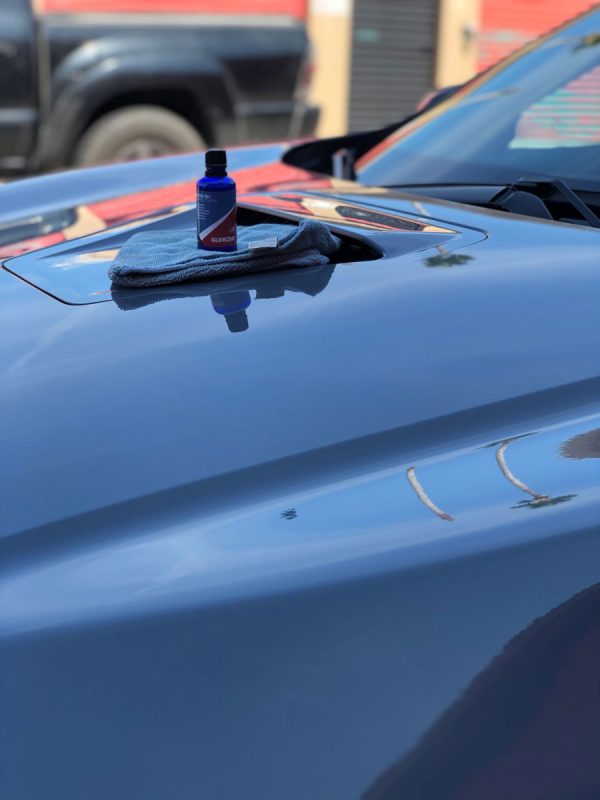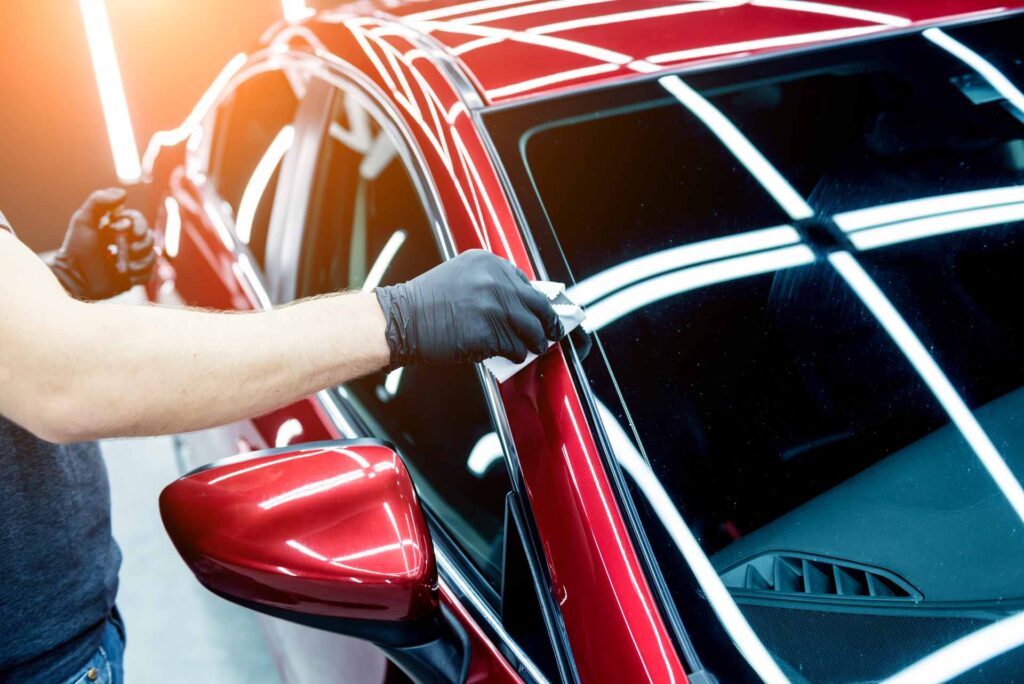Exactly How Ceramic Coating Can Protect Your Automobile from Environmental Damage
Exactly How Ceramic Coating Can Protect Your Automobile from Environmental Damage
Blog Article
The Significance of Ceramic Coating: Shielding Your Auto's Outside With Precision
In an age where keeping the visual and functional stability of your lorry is paramount, ceramic covering arises as a pivotal service. With its special bonding residential properties, ceramic covering provides a level of security that much surpasses traditional waxing techniques.
Benefits of Ceramic Coating
When it comes to protecting an automobile's aesthetic allure, ceramic finish uses considerable advantages. By creating a semi-permanent bond with the automobile's paint, ceramic finishings effectively protect against oxidation and fading, making certain that the cars and truck maintains a shiny, showroom-like surface for an extended period.
In enhancement to its safety high qualities, ceramic coating supplies exceptional hydrophobic residential or commercial properties, triggering water and other fluids to bead off effortlessly. This function simplifies the cleansing process, as dirt and debris are much less likely to stick to the surface, minimizing the frequency and initiative required for maintenance. Furthermore, the finish's resistance to chemical stains from acidic impurities like bird droppings and tree sap is another notable advantage, reducing possible paint damage.
Ceramic finishes also improve scrape resistance, providing a layer that can soak up small abrasions and swirl marks. This characteristic is specifically advantageous in preserving an immaculate surface, decreasing the probability of noticeable imperfections and maintaining the integrity of the automobile's paintwork gradually.

Exactly How Ceramic Layer Works
Understanding the auto mechanics behind ceramic finish exposes its efficiency as a safety remedy for lorries. Ceramic coatings are basically fluid polymer applications that chemically bond with a car's factory paint, developing a safety layer. This layer functions as an obstacle against environmental contaminants such as grime, ultraviolet, and dirt rays, which can weaken a car's outside with time. The vital part in ceramic finish is silicon dioxide (SiO2), which stems from quartz crystals and is understood for its outstanding firmness and sturdiness.
Application of ceramic finishing involves a thorough procedure. The lorry's surface must be extensively cleaned and sanitized to guarantee optimum bond. When applied, the fluid polymer forms a semi-permanent bond with the paint, solidifying into a clear, durable guard. This shield improves the vehicle's gloss and hydrophobic properties, promoting simpler cleansing by causing water and pollutants to grain and slide off effortlessly.
Furthermore, the layer's molecular structure offers resistance to small scrapes and chemical stains. Unlike waxes or sealants that rest on top of the paint, ceramic layers integrate with the surface, using durable protection. This combination is essential to its performance, making certain the vehicle's surface stays excellent for several years.
Comparing Ceramic Coating to Alternatives
In the world of auto defense, ceramic coating stands as a formidable alternative when contrasted to typical choices such as waxes and sealers. While waxes supply a short-term glossy finish, usually lasting just a few weeks to months, Continued ceramic coatings give a longer-lasting remedy, commonly withstanding for years. This sturdiness is credited to the chemical bonding that takes place when ceramic layers are used, developing a solid layer that is immune to environmental threats.
Contrastingly, sealers, although more resilient than waxes, still drop short of the robust defense used by ceramic finishings. Sealants can usually last for as much as a year, offering an artificial guard against particular aspects. They do not have the exceptional hydrophobic residential or commercial properties and UV defense that ceramic finishings deliver.
Furthermore, ceramic layers offer enhanced scratch resistance, which neither waxes nor sealers can properly match. In recap, while traditional waxes and sealants provide fundamental security, ceramic finishes offer a comprehensive, long-term solution that considerably improves and maintains the car's outside coating.
Application Refine Clarified
Using ceramic coating to a lorry requires a thorough process to ensure ideal outcomes and sturdiness. The initial action entails completely cleaning the auto's surface area to remove dirt, oil, and previous waxes. This is essential for making sure the finishing adheres properly. A pH-neutral hair shampoo and a clay bar treatment are commonly used to attain a beautiful surface. When cleansed, the car is dried out and polished to remove any blemishes, as any type of existing swirls or scratches can become extra obvious after the finish is applied.
Complying with surface area prep work, the application of the ceramic finish begins. The finish is typically applied in a climate-controlled setting to avoid dust particles from deciding on the newly cleaned surface area. Utilizing an applicator pad, the ceramic finish is applied in tiny areas to guarantee even protection. It is vital to comply with the maker's guidelines relating to the appropriate healing time and application thickness.
After application, the covering needs a certain curing period, during which the lorry ought to be secured from water and impurities. This healing procedure can vary depending upon the product yet generally ranges from 24 to 2 days. Eventually, this thorough process is critical in accomplishing a resilient and glossy finish.
Upkeep Tips for Durability
To preserve the longevity of a ceramic finish, adherence to a regimented maintenance routine is essential. Normal washing is vital; use a pH-neutral car hair shampoo and soft microfiber mitts to prevent abrasions. Stay clear of automatic car cleans, as their rough brushes can endanger the finish's stability. Rather, select a hand wash to make certain thorough yet mild cleansing.
Post-wash, drying the lorry with a clean microfiber towel prevents water areas that might break down the finish with time. Furthermore, use a ceramic finish booster every few months. These boosters enhance the hydrophobic homes and enhance the finishing's safety capabilities, guaranteeing it continues to be efficient versus pollutants.
Remember that auto parking areas play an important duty in upkeep. ceramic coating. Whenever possible, park in shaded locations to minimize UV direct exposure, Discover More Here which can progressively deteriorate the finishing. For long-lasting storage, think about using a car cover for added defense against environmental elements
Verdict
In verdict, ceramic finish serves as a crucial protective layer for automobile outsides, providing lasting protection versus ecological variables such as dust, uv, and gunk rays. Recognizing the application procedure and sticking to upkeep suggestions are necessary for maximizing click over here the longevity and performance of ceramic layer.
When it comes to maintaining an auto's visual charm, ceramic finishing provides significant benefits. By creating a semi-permanent bond with the automobile's paint, ceramic finishes successfully stop oxidation and fading, making sure that the cars and truck preserves a glossy, showroom-like finish for an extensive period. Ceramic coverings are essentially fluid polymer applications that chemically bond with a cars and truck's factory paint, developing a safety layer. In summary, while typical waxes and sealants offer standard protection, ceramic coatings provide an extensive, lasting service that significantly boosts and preserves the lorry's outside finish.

Report this page